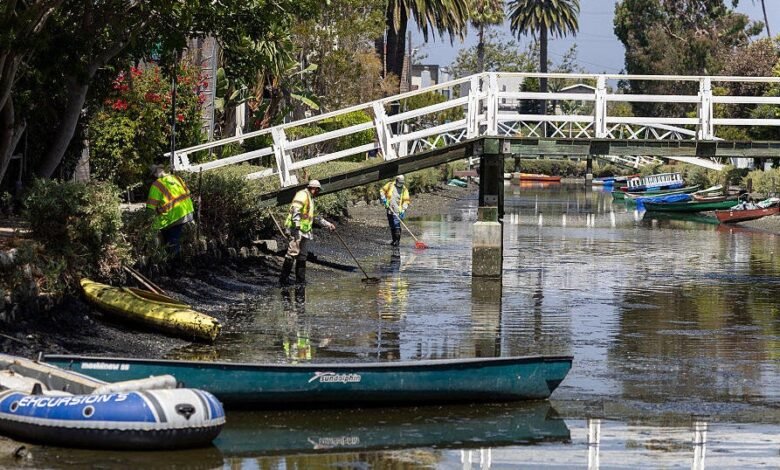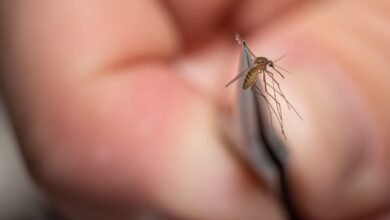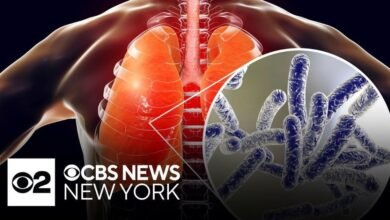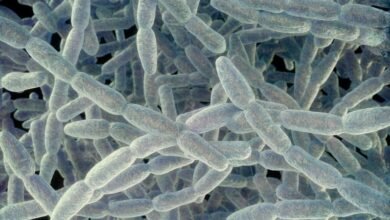Shocking: Venice’s Deadly Canals Claiming Dog’s Lives! Are You at Risk?!

Venice Dog Deaths Prompt Public Health Warnings for Canal Waters
The stunning canals of Venice, renowned for their breathtaking scenery and romantic allure, have recently become the focus of serious public health concerns. A distressing number of dog fatalities associated with these waters has led health authorities to issue alarming warnings. This article delves into the troubling incidents that have unfolded, the implications for both canine companions and humans, and the steps being taken to address this pressing issue.
The Disturbing Incidents
In recent weeks, a troubling pattern has emerged in Venice: multiple dogs have fallen ill and, tragically, some have succumbed after swimming in or coming into contact with the canal waters. Pet owners began to notice signs of sickness in their pets soon after their visits to the waterway, leading to understandable panic and concern in the community.
Reports indicate that dogs experienced symptoms such as vomiting, diarrhea, lethargy, and severe gastrointestinal distress. This cluster of overlapping symptoms raised red flags among local veterinarians, prompting investigations into the waters. The enigmatic nature of these dog deaths has created a wave of fear among pet owners in the area, especially those who frequent the picturesque canals.
Health Warnings Issued
In light of these distressing occurrences, health officials have taken swift action to ensure public safety. The local health department has issued an urgent warning advising pet owners to avoid letting their dogs swim in or drink from the canals. The warning was not solely limited to dogs—it also extended to recommendations for humans to limit unnecessary contact with the water until more information can be gathered.
Authorities have urged pet owners to remain vigilant and report any ill pets to veterinary professionals immediately. The collaboration between pet owners and health officials has proven crucial in monitoring the situation and safeguarding the health of both pets and humans.
Potential Causes of Dog Illness
The exact cause of the dog illnesses remains unknown, but investigations are underway to identify any potential contaminants present in the water. Health experts are particularly worried about potential pollutants and harmful bacteria that could be contributing to the alarming rise in canine fatalities.
Among the primary suspects being considered by environmental scientists are toxic algae blooms, which can produce harmful substances when they proliferate in water bodies. These blooms can release toxins that are particularly harmful to pets and even humans, leading to severe sickness or death upon ingestion or contact.
Furthermore, sewage contamination indicates another possible cause of the illnesses. Heavy rains can lead to overflow from the city’s obsolete sewage systems, inadvertently flooding the canals with untreated waste. This reality raises concerns regarding the overall cleanliness and safety of the waterways.
Investigations Underway
Local authorities and ecological experts are hard at work conducting extensive investigations to ascertain the water quality of the canals. Water samples are being collected and analyzed to detect any harmful bacteria, toxins, or other contaminants that may pose risks to both pets and human health.
This kind of rigorous testing is essential not only to ensure the immediate safety of the dogs but also to establish long-term protective measures for public health. The findings from these assessments will guide officials in determining safe protocols for water use and recreational activity in the canals.
Protective Measures for Pet Owners
While investigations continue, officials recommend several precautionary measures for pet owners to minimize the risks associated with canal waters.
- Avoid Direct Contact: Owners should refrain from letting their dogs swim in the canals or drink from the water.
- Observe Symptoms: Keep an eye on your pet for any signs of illness—especially after they have been near the water. Symptoms such as vomiting, lethargy, and unusual behavior should prompt an immediate vet visit.
- Report Illness: If your pet becomes unwell, report the case to local veterinary services to help authorities track potential health threats.
The Broader Implications
The troubling incidents of canine illnesses have generated a broader discussion regarding environmental health and urban wildlife. The health of our pets is often intertwined with the ecological balance of our environments. Therefore, incidents like these call for greater awareness about the cleanliness of public water systems and their impact on both animals and humans.
Moreover, it emphasizes the need for consistent monitoring and maintenance of public waterways. As cities grapple with issues related to infrastructure, investments in sustainable systems are becoming increasingly necessary. Preserving the health of urban waterways isn’t just about recreation; it’s about ensuring the safety of all living beings that rely on these water sources.
A Community Response
In the wake of these tragic events, the local community in Venice has banded together. Pet owners, animal rights activists, and environmental groups are collaborating to raise awareness and call action from local authorities. Through organized community meetings, they are advocating for better monitoring of water quality and stricter pollution controls to protect the welfare of animals and the integrity of the natural environment.
Such grassroots efforts can effectively lead to policy changes and greater public engagement concerning environmental health issues. The resilience and determination of the Venice community only serve to highlight the collective responsibility for protecting both pets and human life.
The Path Forward
As investigations continue and community initiatives gain momentum, Venice has the opportunity to emerge as a model for proactive engagement surrounding environmental health. The focus should include not only addressing the immediate health concerns but also developing long-term solutions to prevent similar incidents in the future.
With the collaboration of public health officials, environmental scientists, veterinarians, and engaged citizens, there is hope for enhanced safety in the city’s waterways. The overall goal is nurturing a more harmonious relationship between the urban environment and its inhabitants, human and animal alike.
Conclusion
The recent dog deaths in Venice have sparked serious public health warnings concerning the canal waters, leading to increased awareness about the importance of water safety and environmental health. Continued vigilance and community action are paramount in addressing this troubling issue, ensuring both pets and humans can safely enjoy the beauty of Venice’s iconic waterways.
- The tragic deaths of dogs in Venice have raised health concerns about the canal waters.
- Health officials have issued warnings advising pet owners against letting dogs swim in or drink from the canals.
- Investigations are ongoing to determine potential contaminants in the water.
- Pet owners are encouraged to monitor their pets and report any signs of illness.
- Community initiatives are emerging to address environmental health and advocate for public safety measures.





